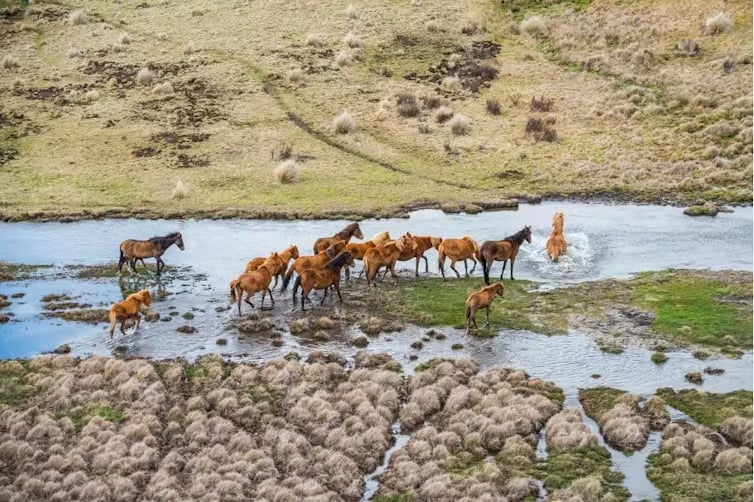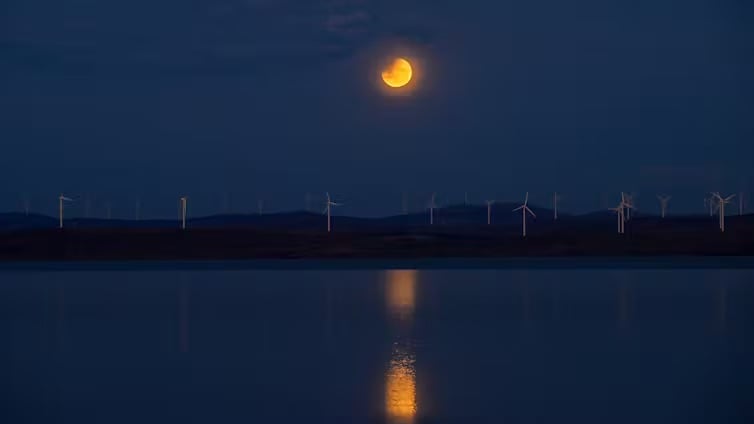Australia’s most destructive cyclones: a timeline
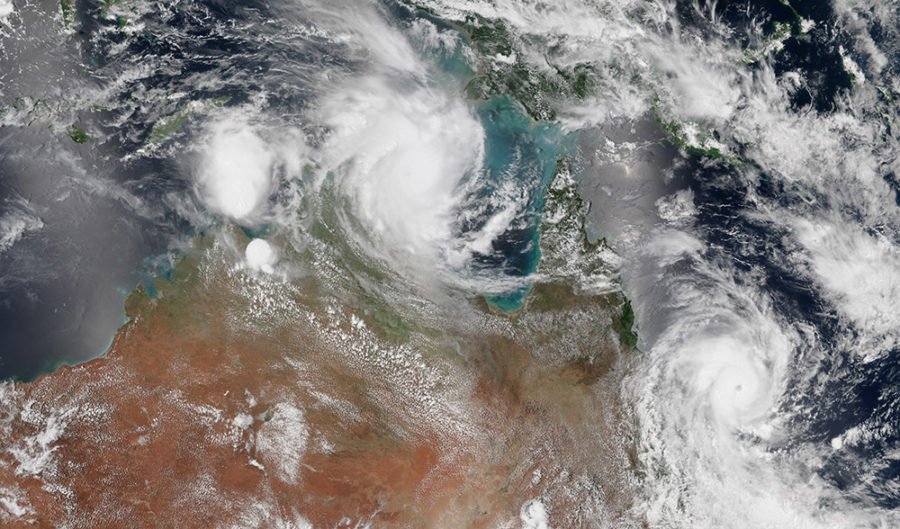
WHEN CYCLONE YASI hit Queensland in 2011, it was declared to be one of the most powerful storms the region had seen since records began.
The earliest documented cyclones often afflicted enormous damage on communities, partly because early forecasting equipment gave them very little warning. Yet, even with today’s improved warning systems and more coordinated response strategies, cyclones still wreak havoc. They are categorised on a scale of 1 to 5 – where 5 is most severe – based on their maximum average wind speed.
The real impact of a cyclone depends on a multitude of factors though, including its size, tides, and how populated the region it hits is.
We look back at some of the worst cyclones to have hit Australia in recent history.
2015 – Cyclone Marcia, category 5
Cyclone Marcia intensified from a category 2 to a category 5 just before crossing the Queensland coast north of Rockhampton in February 2015. With wind gusts of almost 300km/h, it destroyed about 350 homes and damaged almost 2000 properties in and around Yeppoon and Rockhampton. Pre-empting dangerous coastal erosion, conservation volunteers worked hard to relocate the nests of loggerhead turtles higher up the beaches near Bundaberg before the cyclone made landfall.

Cyclone Marcia brought huge seas that extended down to southeast QLD. Here, a young boy plays in sea foam at a Coolangatta beach, about 600km southeast of where Marcia made landfall. (Image source: Frank McGrath/Flickr Commons)
2011 – Cyclone Yasi, category 5
Cyclone Yasi bore down on northern Queensland with all the strength of a category 5 system just days after a category 2 had made landfall 200km to the south. Hospital patients were evacuated from Cairns amid fears the city would suffer a direct hit. But Yasi crossed the coast near Mission Beach, 40km to the south, causing major damage to infrastructure and vegetation around Tully. Yachts in Port Hinchinbrook suffered millions of dollars of damage. One young man was killed – he was asphyxiated by fumes while sheltering inside with his generator.

Sand and tree debris along the Esplanade Townsville. (Image: Rob and Stephanie Levy / Wikimedia)
2007 – Cyclone George, category 5
When Cyclone George crossed the WA coast northeast of Port Hedland, more than 1000 people in mining camps were left stranded. Itinerant workers at a camp about 100km southeast of Port Hedland were among the hardest hit. Their temporary accommodations were not built to withstand cyclonic winds and many of the dongas were destroyed, resulting in two deaths and numerous injuries. George was the most destructive cyclone to affect the Port Hedland region since Cyclone Joan in 1975. Strong winds caused widespread damage, with wind gusts estimated to have reached 200km/h.
2006 – Cyclone Monica, category 5
Cyclone Monica’s powerful wind gusts wiped out a weather station as it neared the Top End coast in April 2006. It moved over fairly remote regions, causing no deaths or serious injuries, although Darwin’s ANZAC Day commemorations were cancelled. The Arnhem Land community of Maningrida, 35km from where Monica made landfall, was one of the hardest hit areas.
2006 – Cyclone Larry, category 4/5*
Cyclone Larry struck northern Queensland near Innisfail just a month before Cyclone Monica. The storm and subsequent floods damaged about 10,000 buildings, of which about 500 were totally destroyed. Helicopters delivered food and emergency supplies to several townships isolated by the floods. Larry wiped out about 80 per cent of Australia’s banana crop, amounting to around $300 million worth of damage. Thousands of people were left without work as a result, and a nationwide banana shortage saw the price of the fruit soar. The cyclone also destroyed about $15 million worth of avocados.
2005 – Cyclone Ingrid, category 5
Cyclone Ingrid was unusual in that it caused widespread damage in two states and a territory. It crossed Cape York as a category 4; intensified to a category 5 before battering coastal and island communities along the NT’s Arnhem Land coast; and crossed WA’s Kimberley coast as a category 4. Five people died when large swells capsized their boat near Kerema, in Papua New Guinea.
1997 – Cyclone Justin, category 2
Cyclone Justin crossed the Queensland coast just north of Cairns on 22 March and moved inland before turning southeast and passing back out to sea. There was widespread damage to the region in and between Cairns and Townsville, caused by a combination of strong winds, heavy rain and storm surges. In Australia, two people were killed – one in a landslide near Townsville and another electrocuted by a fallen power line at Innisfail. Earlier in Justin’s life as many as 30 people died in Papua New Guinea.
1995 – Cyclone Bobby, category 4
Cyclone Bobby travelled the length of the northwest Australian coastline, eventually making landfall near the Pilbara town of Onslow, northeast of Exmouth, just after midnight on 26 February. More than 400mm of rain fell around Onslow, and flooding affected many communities throughout western and southern WA. One motorist drowned while attempting to cross a flooded creek, and seven other people died when two fishing trawlers sunk off the coast near Onslow.
1989 – Cyclone Orson, category 5
Though Orson was one of the most powerful cyclones ever to have struck WA, it moved so quickly that many communities were only exposed to its force for a relatively short period of time. Orson crossed the coast at Cape Preston, west of Karratha, on 23 April moving at 28 km/h. Wind gusts up to 275km/h were recorded at a gas station out to sea shortly before the cyclone made landfall. Several buildings were harmed in the mining town of Pannawonica, while Karratha and Dampier escaped with minor damage. Four Indonesian fishermen reportedly died in rough seas around Ashmore Island, off the northwest coast of Australia.
1986 – Cyclone Winifred, category 3
When Cyclone Winifred crossed the Queensland coast south of Innisfail on 1 February, it was the most disastrous storm that northern Queenslanders had seen in over 14 years. A Bureau of Meteorology report on the storm stated that the general public had a relatively poor understanding of tropical cyclones at the time. One elderly man died after being blown from his roof during the storm, one person drowned, and a teenage girl died from injuries caused by flying debris. The damage to crops and infrastructure extended from Cairns to Ingham, and was compounded by the flooding of the Herbert and Tully rivers.
1978 – Cyclone Alby, category 4
Alby was a rare extra-tropical cyclone that caught residents of southwest WA off guard in April 1978. Very few cyclones reach so far south, but Alby served as a reminder that when they do, they are no less dangerous than their tropical counterparts. Five people died during the cyclone, and it’s believed Alby is the most damaging storm ever to have impacted the region. Alby never actually made landfall, but the hot winds that it brought fanned existing controlled blazes out of control. The fires collectively burnt through roughly 114,000 hectares of forest and farmland.

Beach erosion near Perth, WA, caused by Cyclone Alby’s destructive force in 1985. (Image source: Disaster Resilience Knowledge Hub/Flickr Commons)
1975 – Cyclone Joan, category 5
When Cyclone Joan struck Port Hedland, on the Pilbara coast, it was one of the strongest ever to have hit Australia. About 85 per cent of the houses here were damaged, a hospital was destroyed, and dozens of caravans were overturned, which affected the region’s many itinerant mine workers. One witness recalled the winds were so strong that small crabs from the sea were blown in under her door. Although there was no loss of human life, graziers suffered heavy losses to livestock.
1974 – Cyclone Tracy, category 4
When Cyclone Tracy struck Darwin on Christmas morning 1974, it was a catastrophe that left little unscathed. With winds of more than 200km/h, Tracy left more than half the city’s 43,000 inhabitants homeless. Within weeks, three-quarters of the entire population had either chosen to leave or had been evacuated. Many never returned. At least 65 lives were lost and Australian attitudes towards cyclones changed forever.

Destruction in Darwin following Cyclone Tracy in 1974. (Image: AAP/AP)
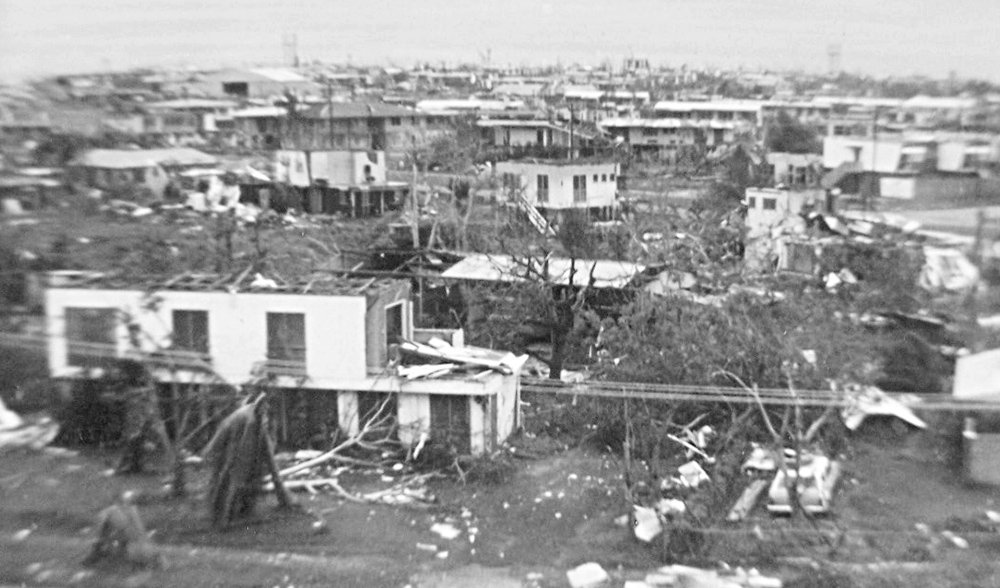
Cyclone Tracy left more than half of Darwin’s population homeless after it struck on Christmas morning, 1974. (Image: Bill Bradley/Wikimedia)
READ MORE:
1972 – Cyclone Emily, category 3
Cyclone Emily crossed the Queensland coast at a little populated area southeast of Gladstone. The cyclone had already started weakening and it dissipated quickly after making landfall, but flooding still occurred in Kingaroy and parts of Brisbane. The full force of the storm was felt out to sea, where Emily was strongest. Eight people on boats drowned in three separate incidents off the central and southern Queensland coast.
1971 – Cyclone Althea, category 4
Cyclone Althea hit Townsville on Christmas Eve, and was one of the most powerful to ever hit the city. It claimed three lives, damaged or destroyed hundreds of homes in Townsville, and damaged most homes on nearby Magnetic Island. Recommendations from the damage assessment changed how Queensland homes were constructed, forming the basis for the first state-wide building codes.
1970 – Cyclone Ada, category 4
Ada wreaked havoc on the Whitsunday Island group, off the Queensland coast, over two days on 17 and 18 January 1970. Worst affected were the Daydream, Long, Hook, South Molle and Hayman islands, as well as the area between Bowen and Mackay on the mainland. At least 13 lives were lost during the storm.
1954 – The Great Gold Coast Cyclone, category 3
The ‘Great Gold Coast Cyclone’, as it is unofficially known, struck southern Queensland and northern NSW during an era when cyclones went unnamed. The cyclone caused widespread damage, from Noosa through to Brisbane, the Gold Coast, Byron Bay and Lismore. At least 26 people died during the storm, Byron Bay’s entire fishing fleet was swept away and trees measuring more than 1m in diameter were twisted from the ground. As the eye of the cyclone passed over Macintosh Island on the Gold Coast it brought calmer conditions, which allowed about 30 people to be rescued. Shortly after the rescue, floodwater inundated the island.
1918 – The Mackay cyclone (unnamed), category 4/5*
Striking Mackay, Queensland, in January 1918, this cyclone was a large system that caused damage along the coast to Rockhampton, where 1400 homes were flooded. About 30 people died as a result. The railway lines and roads in and around the town were damaged, isolating it from the surrounding regions and supplies. It took residents five days to successfully send word out to signal the alarm and tell the rest of Australia what had happened.

Cyclone damaged Methodist Church at Mackay, 1918 This image depicts the flattened Methodist Church on Gregory Street, Mackay and the damaged Parsonage next door. (Image: John Oxley Library, State Library of Queensland)
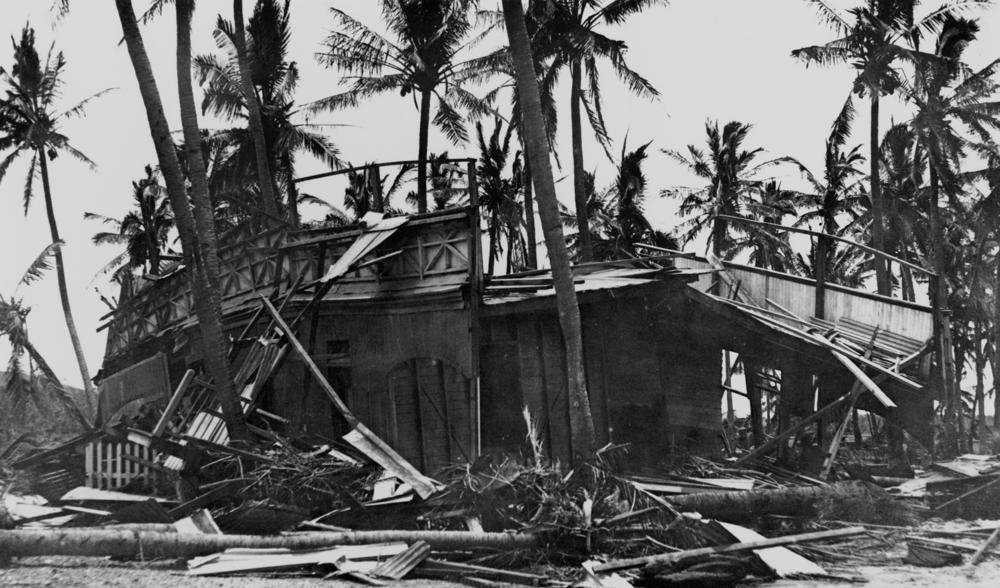
The Mackay cyclone of 1918 ripped Mackay’s Cremorne Hotel apart. Cyclone Eline had already damaged the building in 1898. (Image source: State Library of Queensland)
1918 – The Innisfail cyclone (unnamed), category 5
Before 10 March 1918 Innisfail in Queensland was a town of 3500 people. After the cyclone, only 12 houses remained. It’s thought 37 people died in the town and possibly another 60 in surrounding areas. A storm surge in the Bingil Bay/Mission Beach area swept hundreds of metres inland leaving debris 7m up in some trees.
1899 – Cyclone Mahina, category 5
Cyclone Mahina may have claimed more than 400 lives when it struck Princess Charlotte Bay on Cape York Peninsula, in March 1899, making it Australia’s deadliest natural disaster. Researchers in Queensland have attempted to change records stating the storm reached an intensity of 914 hectopascals (a measure of central pressure, where low figures are more severe). They believed the real figure was 880hPa, putting it among the world’s most intense cyclones of all time.
*There is no consensus as to whether Cyclone Larry and the 1918 Mackay cyclone were category 4 or 5.
RELATED STORIES
- The 10 most destructive tsunamis in history
- Earthquakes: the 10 biggest in history
- How to cyclone-proof your house
- Cyclones: Facts and figures
- The biggest cyclones in recorded history
- Cyclone tracking: Australia’s worst storms
This is an updated version of an article that was originally published on our website in February 2011.

